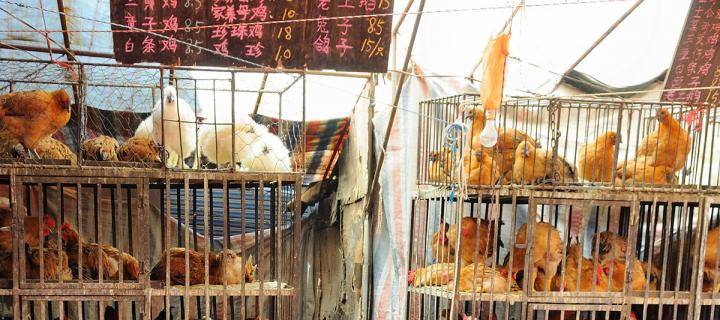Over 100 years of bird flu and human pandemics
Human pandemic by new bird flu viruses is a continuing threat, but control measures can minimise the risks, say scientists at the Roslin Institute.

In 1918 a strain of bird flu virus caused a human pandemic resulting in the deaths of 50 million people.
Thanks to technological advancements, we now know much more about influenza epidemics.
In a new paper, Roslin Institute scientists Sam Lycett, Florian Duchatel and Paul Digard, have reviewed the history of bird flu viruses through the lens of their genetic makeup.
Review paper: A brief History of Bird Flu
They highlight that current strains of the virus have been circulating and diversifying in wild bird populations for at least 100 years.
Wild migratory birds can transport bird flu along their migration routes and can transmit the virus to domestic birds, like chickens or ducks. Whilst wild birds rarely (if at all) transmit the virus to people, transmission from domestic birds to people does occur, especially in live bird markets in Asia.
Bird flu & human influenza
Two virus strains – known as H5 and H7 - have the capacity to become highly pathogenic and kill chickens, studies have shown. However, as highly pathogenic bird flu does not always kill other birds, these strains could be transported around the world along with other viruses, furthering evolution of the virus.
These strains have been sporadically transmitted to people and back into wild birds.
Unlike human influenza, where subtypes of the virus rarely mix with each other, mixing of subtypes is common in bird flu viruses, especially in wild bird populations. This causes bird flu viruses to be far more diverse and generate novel strains more easily than the human viruses.
Emergence of highly pathogenic bird flu
Scientists warn that we should expect the emergence of more highly pathogenic bird flu strains, as this usually occurs approximately once or twice per decade,
Prevention strategies
Ongoing cases of transmission of the virus to people suggest that zoonotic bird flu is a continued threat to human health.
Increasing biosecurity and vaccination in domestic poultry are likely to be important strategies to keep outbreaks to a minimum.
The success of the bird flu H7N9 strain vaccination program in China suggests that it is possible to control the circulation of the virus in domestic birds and thus vastly reduce the number of human infections.
The Roslin Institute receives strategic investment funding from the Biotechnology and Biological Sciences Research Council and it is part of the University of Edinburgh’s Royal (Dick) School of Veterinary Studies.


